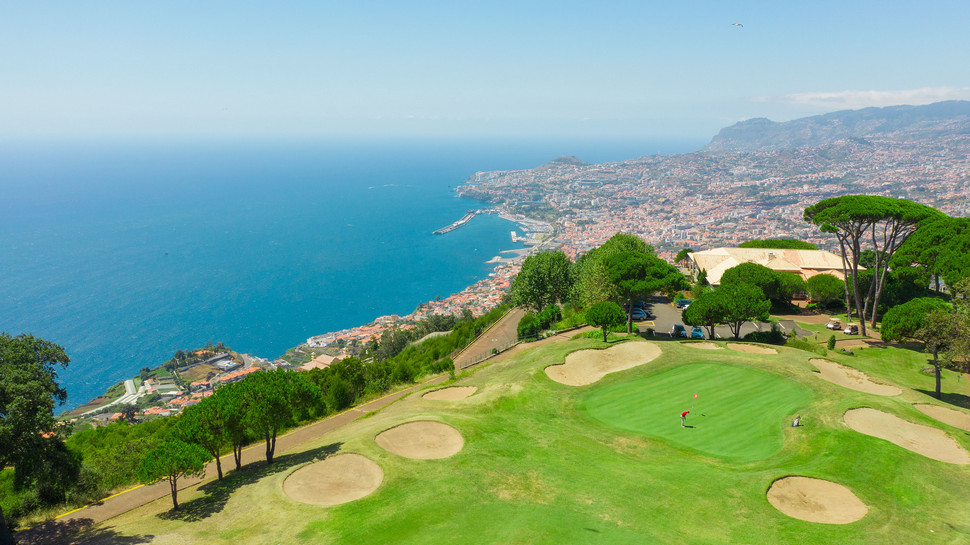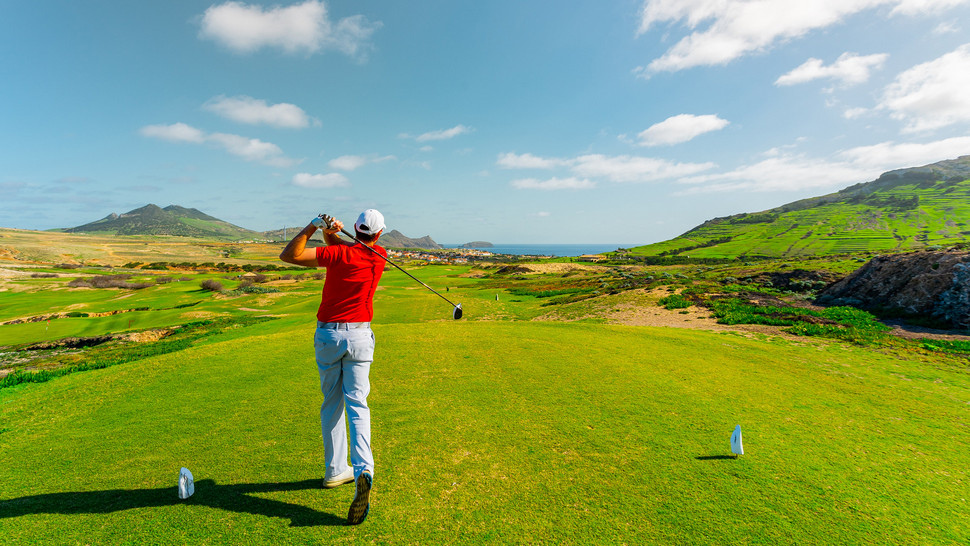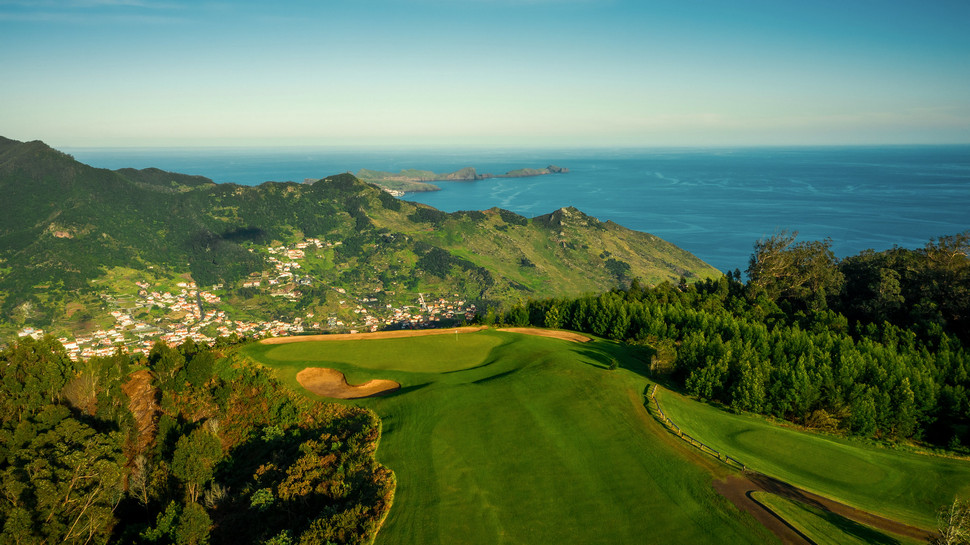Located approximately 1,000km from the European mainland, just 500km from the African continent and enjoying an amazingly mild climate with temperatures ranging from 25°c in the summer to 17°c in the winter, it’s little wonder that the idyllic island of Madeira has become a favourite destination of holidaymakers all over Europe.
Named as the world and Europe’s leading island destination at the 2021 World Travel Awards, visitors have flocked to ‘the islands of eternal spring’ in growing numbers in recent years to experience all that it has to offer – including sampling a glass or two of its world-famous wine.
But did you know that the stunning Portuguese archipelago is also home to three breathtaking golf courses which, when combined with its temperate climate and its many other charms, have helped Madeira establish itself as one of the continent’s fastest emerging golf destinations.
Two of the courses – Palheiro Golf and Clube de Golf Santo da Serra – are on Madeira itself, while the third, Porto Santo Golfe, lies a short hop away on the island of the same name, one of four comprising the archipelago.
The Cabell B Robinson-designed Palheiro Golf opened in 1993 and sits within the magnificent Palheiro Estate, which is more than 200 years old. The course borders the five-star Hotel Casa Velha do Palheiro and meanders through a pristine environment of maritime pine and botanical woodland, garnished with lush, sub-tropical vegetation.
At nearly 1,640ft above sea level, the location enjoys dramatic views of Madeira’s mountainous skyline and the vast Atlantic Ocean, as well as – nestling below, just 10 minutes away – the island’s capital, Funchal.
The par-72, 6,656-yard course takes full advantage of Madeira’s hilly terrain, with abrupt ridges and deep valleys. The presence of an impressive hotel helped secure Palheiro a place in the top 80 in two recent ‘best European golf resort’ lists and even better times lie ahead for Madeira’s only golf resort with the venue currently undergoing a series of upgrades, including the launch of a new golf academy next year featuring a 28-bay driving range and a fitting centre with the latest ball-tracking technology.
Robert Trent Jones Snr’s 1991 redesign of Clube de Golf Santo da Serra – which dates originally from 1937 – created a spectacular 27-hole complex in a beautiful natural landscape, with views of Porto Santo and the bay of Machico, where Portuguese navigators first landed in 1419.

The Machico and Desertas nines form the 6,825-yard championship course, on which the European Tour’s Madeira Islands Open was held on 10 occasions – Mark James winning the inaugural 1993 tournament. The third and fourth on the Machico are regarded as the signature holes, sitting atop cliffs more than 2,200ft above the Atlantic.
The 3,193-yard Serras course offers a delightful alternative, with lakes and mountain views along flatter terrain, and golfers can look forward to an improved experience from this autumn after the installation of a new state-of-the-art irrigation system – reducing its water consumption by around 66 per cent.
Having installed a new irrigation system on the Machico and Desertas nine-hole loops at the end of last year, the venue has now completed similar work on 3,193-yard Serras course – reducing its water consumption by two thirds so that just 750m³ a day is now needed to help ensure optimum course conditions all-year round.
A short, 20-minute flight – or a two-and-a-half hour cruise – will cover the 27 miles between Madeira and the archipelago’s eastern-most island, Porto Santo, home to Porto Santo Golfe, which hosted the Madeira Islands Open between 2009 and 2011.
Laid out by Severiano Ballesteros, the 7,036-yard course, which opened in 2004 and was built to environmentally conscious standards, comprises two distinct nines, spanning an area from sand dunes to basalt cliffs.
The US-style southern route is dotted with lakes, requiring a long, precise game; while the northern route is atop yet more fantastic cliffs, near a stunning beach, also called Porto Santo. The signature hole is undoubtedly the 200-yard, par-three 13th, which requires a shot over a gorge to reach a cliff-top green.
The best way to enjoy the island’s golf is with a Madeira Golf Passport. Providing holders with an unrivalled golf experience on the island, the Madeira Island Golf Passport is available to both individuals and groups and can be booked on a three or five-round basis.
Costing €225 per person for three rounds and €360 for a five-round package, the standard passport – which is valid for a two-week period – includes golf at Clube de Golfe Santo da Serra and Palheiro Golf and free golf course transfers to and from your hotel.
There is also the opportunity to book tee times directly with the clubs prior to travel, while, for an additional €83.80 per person, golfers can upgrade to Madeira’s premium golf passport, which includes return ferry travel to Porto Santo and 18 holes on the island’s acclaimed golf course.
Booking couldn’t be easier using the Madeira Golf Passport website, and one of the added bonuses of the portal – which was launched last year by Madeira. Belongs to all, the consumer-facing brand of the Madeira Promotion Bureau – is that it acts as a one-stop shop for players eager to discover some of the many attractions away from the fairways.

As well as golf, visitors to the website can review and book their accommodation, with a selection of quality hotel, self-catering and all-inclusive options all available.
In addition, people can also review the plethora of historic, cultural and culinary experiences that are available off the course – with dolphin and whale-watching trips, nature jeep tours, climbing and canyoning and an array of restaurants serving the finest local cuisine among the treats on offer.
The great thing about a trip to Madeira is that there’s always something to discover and the only difficulty is knowing where to start sometimes, with a warm welcome guaranteed at the many festivals and cultural and gastronomic events that are available throughout the year.
Anyone visiting the Portuguese archipelago for the first time will quickly realise that sampling traditional Madeiran food and drink form an essential part of any trip and there is a selection of foodie delights that should not be missed.
One of the best-known dishes is espetada; small cubes of beef seasoned with salt, garlic and bay leaf, placed on a skewer and then roasted on a brazier. Pork is also generally consumed in cube form, after being seasoned and marinated in garlic, vinegar, bay leaf, pepper and white wine.
Lapas (limpets) are a must for seafood lovers and are served grilled with butter, garlic and a squeeze of lemon, while a plate of tuna steak with fried corn or black scabbard (a fish found at a depth of 1,000 metres) is also highly recommended.
Thanks to the sub-tropical climate and volcanic soils, Madeira enjoys access to a wide array of fruit. Bananas from the islands are a bit smaller and sweeter than those found in the UK while also make a point of trying some of the sumptuous passion fruit on offer, particularly in a traditional passion fruit pudding.
No visit to the islands is complete without indulging in a glass or two of Madeira wine, which originated in the 18th century when the island started exporting wine to the rest of the world. This year’s Madeira Wine Festival will be held from August 25 to September 11 and is well worth a visit, while also take the trouble to sample poncha, a traditional alcoholic drink made with sugar-cane rum, sugar and lemon juice.
Of course, the whole point of a holiday is to unwind and Madeira scores highly when it comes to well-being and relaxation, with the islands’ climate and natural surroundings making it an ideal destination to escape the stresses of daily life.
A choice of spas and beauty centres offering different therapies are available, including thalassotherapy, traditional treatments and holistic retreats, inspired by the elements of the island’s nature.
Alternatively, take a trip to Porto Santo’s beaches which are rich in natural anti-inflammatory substances. The sand’s physical, chemical and thermal properties are the basis of psamotherapy which, together with seawater, are the recipe for a relaxing and stimulating vacation, always leaving the latent desire to return.
Now I’ll raise a glass to that.
For further information on Madeira, go to www.madeiraallyear.com.
